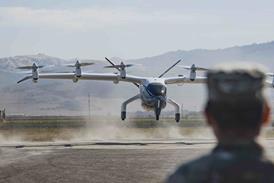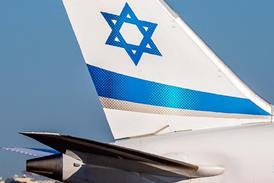Tim Furniss/LONDON
China has already lost, three of its outstanding launch contracts, after the 14 February loss, of the first Long March 3B (LM3B) booster with its $125 million Intelsat 708 satellite payload.
Following the move of the Echostar 2 to the Ariane (Flight International, 27 March-2 April), Intelsat is to cancel Long March launches of the Intelsat 804 and 805 satellites in 1997. Making matters worse, the part Chinese Asiasat company now says that it will launch its Asiasat 3 on a Russian Proton, rather than award the contract to China.
One other contracted satellite, the Nahuel, is also manifested on an Ariane, while, of the remaining six contracts, only that for the ApStar 1A - scheduled for an LM3 launch this month - can be considered safe (provided that the launch is a success). The other contracts are for the DirectSat1, Chinasat 3, ApStar 2R, Echostar and Mahubay. These satellites are all scheduled to fly on the LM3B, or its derivative, the LM3C.
Three out of nine of China's commercial launches have now failed. The Optus B2 was lost in an LM2E explosion at T+48s in December 1992, and the ApStar 2 was destroyed in a similar LM2E demise at T+51s in January 1995. The space-insurance community, which has lost $480 million on the Chinese launcher roulette wheel, has been unimpressed by the fact that these failures have not been fully explained.
The destruction of the Optus B2, was suspected to have been caused, by the loss of the payload fairings resulting from an explosion aboard the Hughes HS-601 satellite. China Great Wall Industry (CGWIC) and Hughes agreed that neither the launcher, nor the satellite was to blame for the loss, amid industry rumours that the cause of the Optus failure was indeed a minor explosion on the satellite.
The explanation of the loss of the ApStar 2 HS-601 model in January 1995 was not much better. Rogue windshear and turbulence were blamed. The next satellite customer, Lockheed Martin, builder of the Asiasat 2, agreed to construct a stronger interface between the satellite and the launcher.
The 1995 LM2E launch of the Asiasat 2 was a success, followed by that of another Lockheed Martin-built spacecraft (the Echostar 1) aboard an LM2E in December, boosting confidence in Chinese capabilities. Then came the LM3B crash, the nature of which makes it impossible for CGWIC not to blame the booster.
Initial reports fault the inertial-guidance system. It has also been revealed that the LM3B did not undergo a full pre-launch test. The booster failure may have damaged China's commercial hopes irreparably.
More defections are expected by several customers, especially to the ILS International Launch Services Atlas fleet, which has open slots in its schedule for 1996-9. These are likely to go to the Intelsat 804 and 805.The first ILS commercial launch of a Russian Proton - of the Astra 1F - is scheduled for 9 April and will be watched with great interest. Seven contracts have already been agreed for the Proton.
With such a poor record, it may be surprising that so many customers queue up for a Long March launch. The reasons are cost US foreign policy and launcher availability. China charges less than $50 million for a commercial launch, at least $30 million less than the cost of other launches - even that of the Proton launcher, now that it is under the ILS management.
US policy to support the Chinese effort has resulted in an agreement to allow the country to launch 12 commercial geostationary satellites to 31 December, 2001, leaving CGWIC to net only a further five customers, provided that there are no more defections.
There is a shortage of immediate launch capacity. Arianespace is almost fully booked for 1996/7 launches, the ILS Atlas has about six available slots for the same period and the Delta 2 is not in the same carrying-capacity league.
In the best of times, it is unlikely that China would be able to support a launch schedule of more than five satellites - including national spacecraft. Its average commercial-launch rate is only two a year, so it is hardly in the big league when compared with the maximum 12 a year each for ILS and Arianespace. Ariane 4s also carry more than one satellite. During 1995, Arianespace launched 13 satellites in 11 launches over just ten months.
China's Long March 2E launch of the Asiasat 2 was a success
Source: Flight International




















